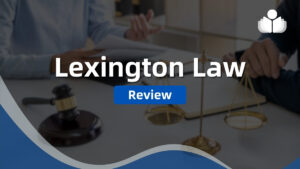In a previous post, I introduced “A Four-Step Process for Effective Grantsmanship,” including:
(1) prospecting for foundation funding,
(2) cultivation,
(3) grant proposal development, and
(4) grant management and stewardship.
(See Chapter Five in my ebook: Grants & Grantsmanship)
So far, I’ve provided a lot of information on steps one through three, as well as on grant reporting (part of stewardship), but I neglected to introduce step four with a post on stewardship.
This post is that introduction:
The Association of Fundraising Professionals defines stewardship as, “a process whereby an organization seeks to be worthy of continued philanthropic support, including the acknowledgement of gifts, donor recognition, the honoring of donor intent, prudent investment of gifts, and the effective and efficient use of funds to further the mission of the organization.”
Although the term is most often associated with individual donors, it is also an important element in your grant program. As I have said in previous postings, “relationships are at the heart of all fundraising activities, and grants are no exception.” Stewardship encompasses the activities you undertake to maintain and build relationships with your foundation grant makers.
As with individual donors, stewardship of foundations encompasses three elements: gift acknowledgement, donor recognition, and reporting.
Gift acknowledgement is straightforward: send written acknowledgement of the grant within one to two days of receipt of the grant, typically a letter signed by your executive director. It is also a good idea to have your ED call the foundation manager or trustee to thank them personally.
Donor recognition is more involved and can include any or all of the following:
• Listing the foundation grant in your annual report, on your website, in e-mail and social media communications
• Writing a press release about the foundation grant and what it means to your NPO’s clients
• Including the foundation name on a donor wall or other named space signage
• Honoring the foundation at an event hosted by your NPO
An important consideration for ALL donor recognition is to involve the foundation’s leadership – either the manager or trustee – before you publically recognize the grant. They may want to remain anonymous, or they may want as much publicity as they can garner and will want to help craft the messaging. Either way, the recognition you provide should be what the foundation leadership wants to receive.
Reporting encompasses formal grant reports as well as informal communications on your NPO’s accomplishments. I covered formal grant reporting in my March 1, 2012 post, “The Dog Ate My Foundation Report,” and included a number of ideas for informal communications in my June 14, 2012 post, “Who Moved My Funder.”
I’ll conclude this post with WHY stewardship is an important element in your grant program. For the simple reason that it’s much easier to retain a donor (in this case a foundation grant) than to recruit new donors, and stewardship is critical to donor retention.
=-=-=-=-=-=-=-=-=-=-=-=-=-=
Lynn deLearie Consulting, LLC, helps nonprofit organizations develop,
enhance and expand grants programs, and helps them
secure funding from foundations and corporations.
Contact Lynn deLearie.
=-=-=-=-=-=-=-=-=-=-=-=-=-=
Look for Lynn’s ebook on Grants & Grantsmanship.
It’s part of
The Fundraising Series of ebooks
They’re easy to read, to the point, and cheap ($1.99 – $4.99) ☺
=-=-=-=-=-=-=-=-=-=-=-=-=-=
If you’re reading this on-line and you would like to comment/expand on the above, or would just like to offer your thoughts on the subject of this posting, we encourage you to “Leave a Reply” at the bottom of this page, click on the feedback link at the top of the page, or send an email to the author of this posting. If you’ve received this posting as an email, click on the email link (above) to communicate with the author.
 Sections of this topic
Sections of this topic
















